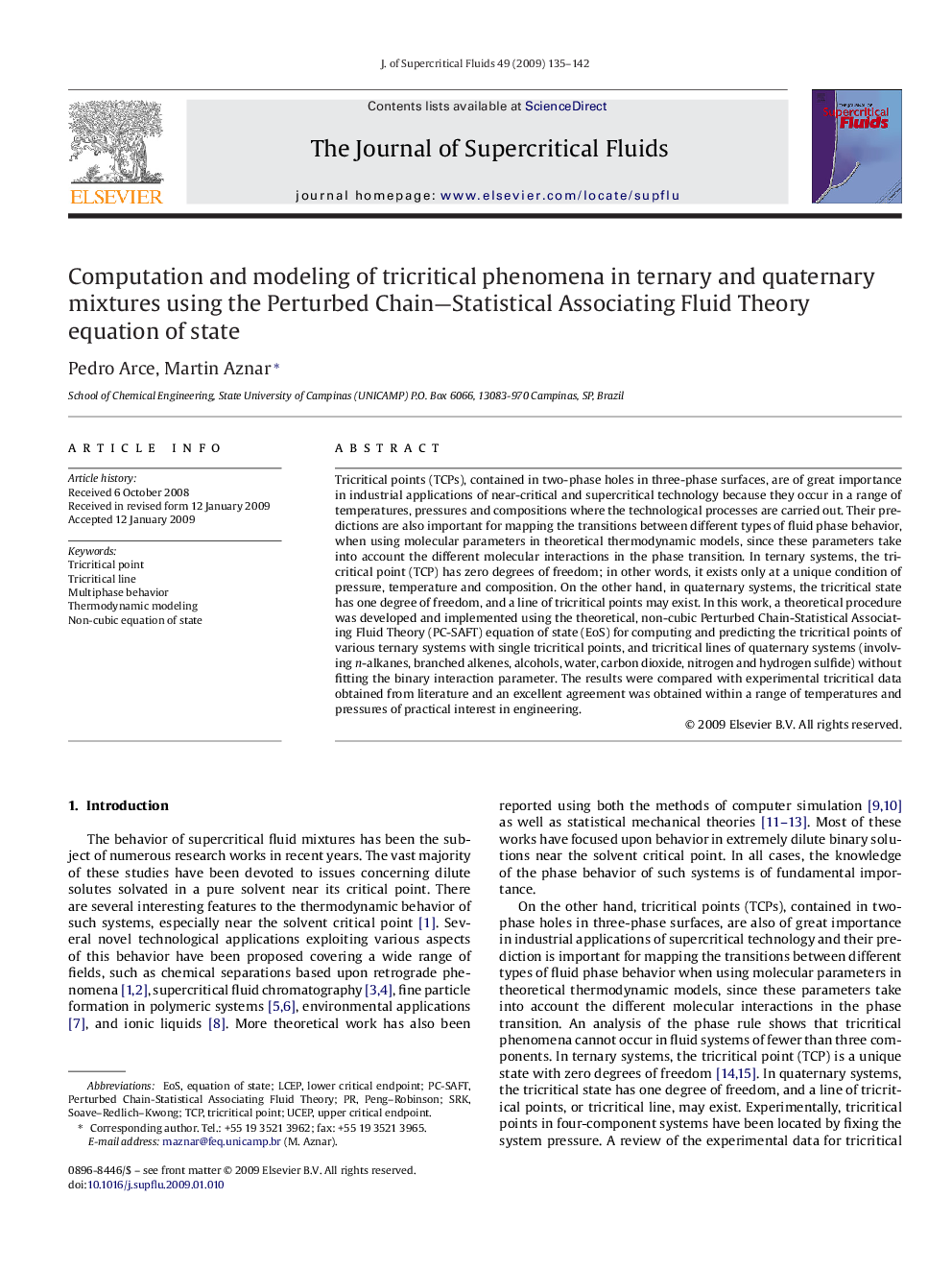| Article ID | Journal | Published Year | Pages | File Type |
|---|---|---|---|---|
| 231652 | The Journal of Supercritical Fluids | 2009 | 8 Pages |
Tricritical points (TCPs), contained in two-phase holes in three-phase surfaces, are of great importance in industrial applications of near-critical and supercritical technology because they occur in a range of temperatures, pressures and compositions where the technological processes are carried out. Their predictions are also important for mapping the transitions between different types of fluid phase behavior, when using molecular parameters in theoretical thermodynamic models, since these parameters take into account the different molecular interactions in the phase transition. In ternary systems, the tricritical point (TCP) has zero degrees of freedom; in other words, it exists only at a unique condition of pressure, temperature and composition. On the other hand, in quaternary systems, the tricritical state has one degree of freedom, and a line of tricritical points may exist. In this work, a theoretical procedure was developed and implemented using the theoretical, non-cubic Perturbed Chain-Statistical Associating Fluid Theory (PC-SAFT) equation of state (EoS) for computing and predicting the tricritical points of various ternary systems with single tricritical points, and tricritical lines of quaternary systems (involving n-alkanes, branched alkenes, alcohols, water, carbon dioxide, nitrogen and hydrogen sulfide) without fitting the binary interaction parameter. The results were compared with experimental tricritical data obtained from literature and an excellent agreement was obtained within a range of temperatures and pressures of practical interest in engineering.
